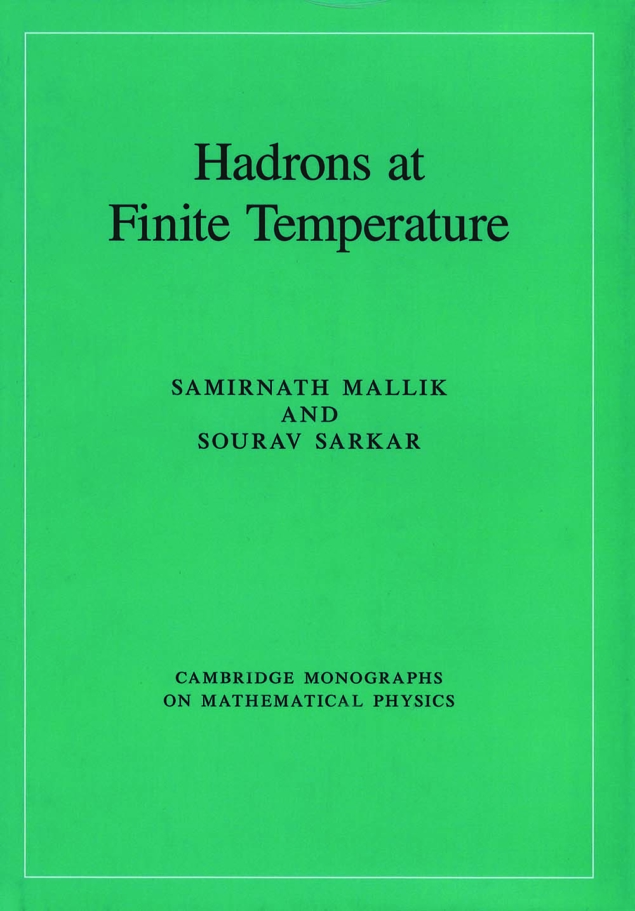By Samirnath Mallik and Sourav Sarkar
Cambridge University Press

In high-energy physics laboratories, experiments use heavy-ion collisions to investigate the properties of matter at extremely high temperature and density, and to study the quark–gluon plasma. This monograph explains the ideas involved in the theoretical analysis of the data produced in such experiments. It comprises three parts, the first two of which are independent but lay the ground for the topics addressed later.
The book starts with an overview of the (vacuum) theory of hadronic interactions at low energy: vacuum propagators for fields of different spins are introduced and then the phenomenon of spontaneous symmetry breaking leading to Goldstone bosons and chiral perturbation theory are discussed.
The second part covers equilibrium thermal field theory, which is formulated in the real time method. Finally, in the third part, the methods previously developed are applied to the study of different thermal one- and two-point functions in the hadronic phase, using chiral perturbation theory.
The book includes chosen exercises proposed at the end of each chapter and fully worked out. These are used to provide important side results or to develop calculations, without breaking the flow of the main text. Similarly, some of the results mentioned in the text are derived in a few appendices. It is a useful reference for graduate students interested in relativistic thermal field theory.







